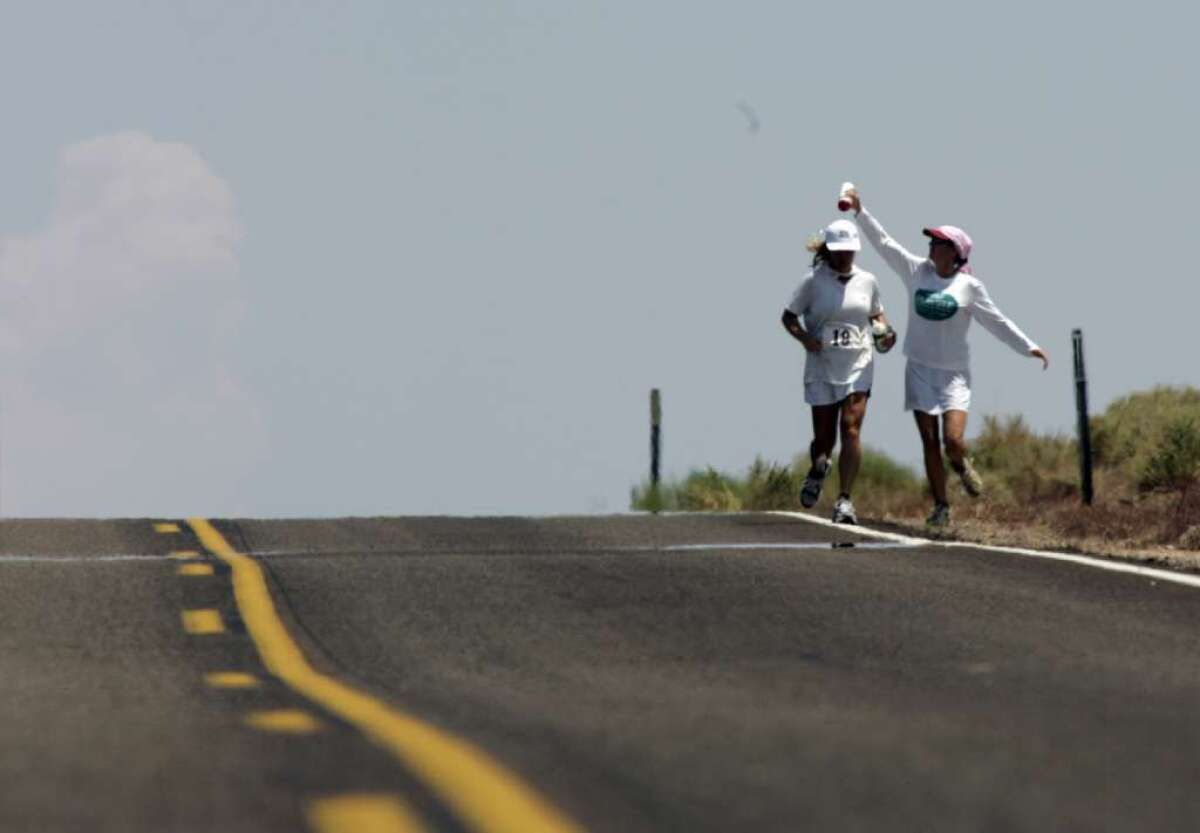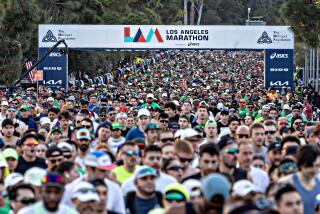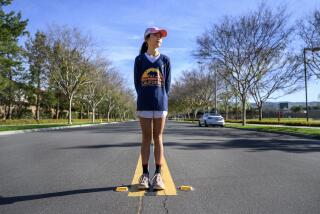Ultramarathoners miss less work, less sickly, study says

People who run races of more than 50 miles get hurt — stresses and strains and bruised toes. But generally they are healthier and take less sick time than the rest of us. None of that’s too surprising, if you imagine what it takes to run even five miles.
Running races longer than a marathon — 26.2 miles — has grown in popularity, with 15,500 people finishing such races in 1998 and 63,530 doing so in 2012, according to UltraRunning magazine. So researchers decided to look at the health effects of extreme exercise. They assessed 1,212 ultramarathoners to establish a baseline for the Ultramarathoner Longitudinal Tracking Study and reported their findings Wednesday in the journal PLOS One.
“Such information is valuable in understanding potential benefits and risks from levels of exercise beyond the moderate amounts known to have health benefits,” the researchers — Dr. Martin Hoffman, an ultrarunner and UC Davis professor, and Dr. Eswar Krishnan, an assistant professor at Stanford University School of Medicine — wrote.
The participants in the study were 18 to 81 years old, with an average of 42; mostly men and mostly white. Their average running distance for the previous year was 3,347 miles (more than 64 miles a week).
Some of their findings:
— The most prevalent conditions — significantly higher than in the overall population — were allergies and hay fever (about a quarter of them) and exercise-induced asthma, 13%. The researchers speculated that the asthma could result from the drying of the airways during exercise and the allergies from the increased exposure to airborne allergens.
— Fewer than the overall population-reported diseases such as cancers (4.5%), heart disease (0.7%) and diabetes (0.7%).
— Seventy-seven percent reported exercise-related injuries, and 64% of the runners reported that an injury cost them training days, but those injuries rarely cost them time from work or school. They lost an average of 2.2 days a year of work or school because of injury or illness; employed Americans lost 3.7 days. Younger and less experienced long-distance runners were more apt to be injured.
— Most of the injuries were to the legs and feet, but just 3.7% of them were stress fractures.
Assessing these runners over time will help reveal “how much exercise is optimal, how much recreational activity is appropriate and beneficial and if there is a reason not to push your body beyond a certain point,” Krishnan, an epidemiologist, said in a statement.
The next step, a questionnaire to be sent early this year, will look at whether the runners have particular knowledge or adaptations to prevent injuries. They also hope to study the psychological factors that motivate the runners.
ALSO:
Better signs lead to more activity
Exercise does the trick of drugs sometimes
Mary.MacVean@latimes.com







